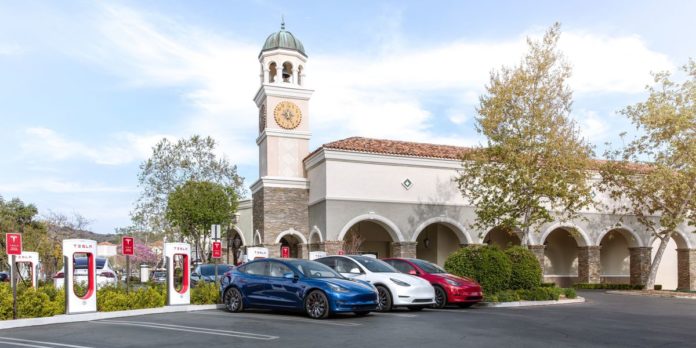- Tesla was the first automaker to really invest in its own public fast-charging network, and a decade head start means the company’s Superchargers are the best available.
- It’s not even close, really. In J.D. Power’s study, more than one in five EV drivers (21 percent) said they were unable to charge at a non-Tesla station in the first quarter of this year, but at Superchargers it was less than 4 percent.
- Ford, GM, Rivian, Volvo, and Polestar have all said their future EVs will be compatible with Tesla’s NACS standard.
Electric vehicles have gotten noticeably better in the last five years. Public charging? Not so much. That’s why more and more automakers are signing up to have their EVs use Tesla’s Supercharger network in the near future.
Polestar, Volvo, Rivian, and GM all made announcements about using Tesla’s units in June after Ford kicked off the surprising trend in May. So, we can now say it’s good news for the broader EV community that Tesla has the most reliable fast-chargers around.
Tesla drivers rated their overall satisfaction with the DC fast-charging options at 734 (on a 1000-point scale), well above the industry average of 558. GM EV drivers rated their experience at 586, with Ford coming in at 544. That’s the finding of a new J.D. Power E-Vision Intelligence Report, which also notes that the flood of new companies that will use Tesla’s North American Charging Standard (NACS) means over 70 percent of all EV sales in the U.S. will “soon” be compatible with the Tesla standard.
No Contest on Reliability
EV drivers need to be able to count on public charging stations being operational when they pull up to charge, and here is where Tesla really provides for its drivers. According to JD Power’s survey, more than one-in-five EV drivers who went to a non-Tesla public charging station in the first quarter of 2023 (21.6 percent) were not able to charge their vehicle during their visit. At Tesla Superchargers, it was just 3.9 percent. The report puts it simply, “When it comes to reliability, no other provider is even close to Tesla.”
The White House has said that NACS will be a part of President Biden’s Bipartisan Infrastructure Law, which is spending $7.5 billion on new EV charging solutions.
SAE International said this week that it will set standards for the NACS connector so that any supplier or manufacturer can use it. In 2022, all of the energy used at a Tesla Supercharger was renewable, either through on-site resources or through annual renewable matching.
Highly Ranked Last Year, Too
Tesla’s public charging lead is not new. In its 2022 EV Experience Public Charging Study, J.D. Power found that EV drivers ranked Tesla Superchargers highest or all available DC fast-chargers. Tesla’s ranking was so far above its competitors, in fact, that it was the only DC fast-charger brand to rank above the industry average. Tesla’s Destination chargers also ranked highest among Level 2 charging stations.
In April, Tesla’s latest Impact Report claimed that its Superchargers have had an uptime of at least 99.9 percent since 2018. Tesla’s definition of “uptime” is when at least half of the chargers at a Supercharger site are operational on any given day.
This content is imported from poll. You may be able to find the same content in another format, or you may be able to find more information, at their web site.
Contributing Editor
Sebastian Blanco has been writing about electric vehicles, hybrids, and hydrogen cars since 2006. His articles and car reviews have appeared in the New York Times, Automotive News, Reuters, SAE, Autoblog, InsideEVs, Trucks.com, Car Talk, and other outlets. His first green-car media event was the launch of the Tesla Roadster, and since then he has been tracking the shift away from gasoline-powered vehicles and discovering the new technology’s importance not just for the auto industry, but for the world as a whole. Throw in the recent shift to autonomous vehicles, and there are more interesting changes happening now than most people can wrap their heads around. You can find him on Twitter or, on good days, behind the wheel of a new EV.

